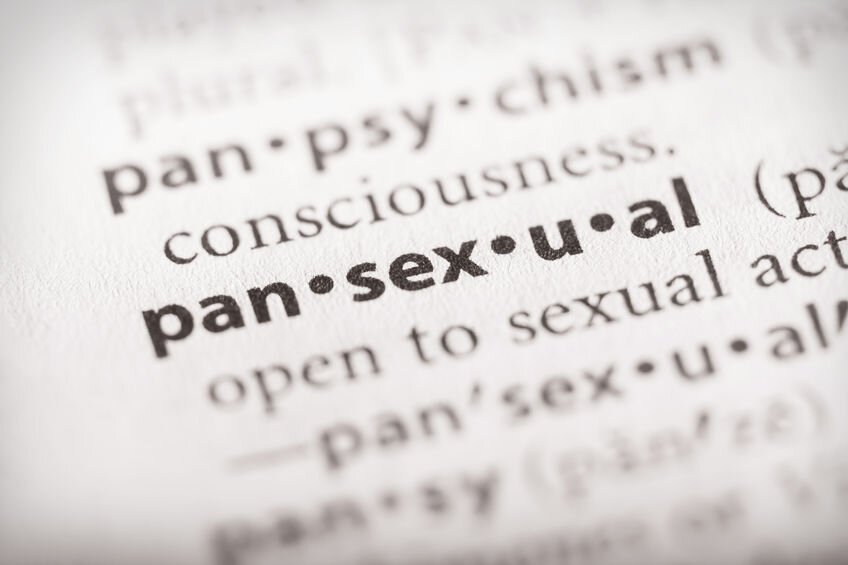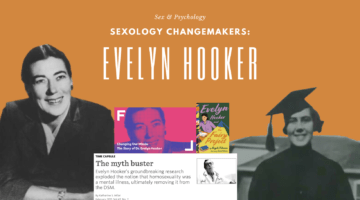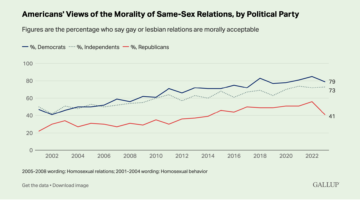Bisexual Versus Pansexual: What’s the Difference?
February 28, 2020 by Justin Lehmiller
I’ve been getting a lot of questions lately about the difference between being bisexual versus being pansexual. There seems to be a lot of confusion about what these terms really mean and how they’re similar or different, so I thought it would be worth exploring this in a post.
Let’s start with the term “bisexual.” Historically, this term has been used to refer to a sexual orientation that involves attraction to both men and women. It originated in a time when sex/gender was primarily seen as a binary construct. However, the meaning of bisexual is something that has evolved over time.
Today, different people define “bisexual” in very different ways. For example, in one of my human sexuality courses, I assign an article to students that presents 13 different ways of understanding bisexuality [1]. Some definitions are very narrow (sexual attraction to males and females); however, others are quite expansive in that they don’t really reflect a sex/gender binary at all.
For example, one of the definitions discussed in this article is that a bisexual person is someone who is not prevented from being attracted to another person based solely on their sex/gender.
Similarly, in a study of young adults (aged 18-30) who identified as bisexual and were asked to define what this term means, researchers found that “bisexuality is defined in a plethora of ways, including definitions based on behavior, attraction, or desire” and, further, people’s definitions “may employ binary or nonbinary definitions” [2].
So what does being bisexual really mean? It depends who you ask!
By contrast, “pansexual” is a term that people seem to be a little more consistent in defining; however, there’s still variability in the way people characterize it, too.
For example, in one survey of 57 pansexual individuals who were asked to define what pansexuality means, two distinct definitions emerged [3]. In the words of the study’s authors: “While some respondents suggested that pansexuality was a sexual orientation that saw beyond genders and sexes, others suggested that it was a sexual orientation that was defined by attraction to all genders and sexes, as opposed to viewing them as irrelevant.”
In other words, some people see pansexuality as being “gender-blind”; however, others see it as recognizing that multiple genders exist, and that pansexual persons have the ability to be attracted to all of them.
So, like bisexuality, the definition of pansexuality depends on who you ask. That said, one thing is pretty common across definitions of pansexuality, which is that pansexuals don’t look at sex/gender in binary terms.
Given all of this variability in the way people define bisexual and pansexual, it shouldn’t be surprising that people sometimes identify with both labels—or have other sexual identity labels, too. For example, in the aforementioned study of pansexual individuals, a majority of them reported having multiple sexual identities [3].
The important thing to take away from all of this is that not everyone shares the same definition of any given sexual identity label. And this is why we sometimes see conflicts arise.
For example, I’ve heard some pansexual people accuse bisexual people of being transphobic because they see bisexuality as a term rooted in a gender binary that necessarily excludes trans and non-binary people. At the same time, however, we know that many bisexual people don’t view their identity this way at all.
Bottom line: don’t make assumptions about someone’s sexual attractions based solely on their sexual identity label. Identity labels are ultimately individual choices. People gravitate to sexual identities based on their own understanding of their sexuality and the way they construe the meaning of a given label.
Also, to be clear, while the labels we apply to our sexuality are a choice, same-sex attraction is not something that people choose. Research increasingly finds that same-sex attractions have a genetic basis. To learn more about this research, see here.
Want to learn more about Sex and Psychology ? Click here for previous articles or follow the blog on Facebook (facebook.com/psychologyofsex), Twitter (@JustinLehmiller), or Reddit (reddit.com/r/psychologyofsex) to receive updates. You can also follow Dr. Lehmiller on YouTube and Instagram.
[1] Halperin, D. M. (2009). Thirteen ways of looking at a bisexual. Journal of Bisexuality, 9(3-4), 451-455.
[2] Flanders, C. E., LeBreton, M. E., Robinson, M., Bian, J., & Caravaca-Morera, J. A. (2017). Defining bisexuality: Young bisexual and pansexual people’s voices. Journal of Bisexuality, 17(1), 39-57.
[3] Gonel, A. H. (2013). Pansexual identification in online communities: Employing a collaborative queer method to study pansexuality. Graduate Journal of Social Science, 10(1), 36-59.
Image Source: 123RF/Mark Poprocki
You Might Also Like:

Dr. Justin Lehmiller
Founder & Owner of Sex and PsychologyDr. Justin Lehmiller is a social psychologist and Research Fellow at The Kinsey Institute. He runs the Sex and Psychology blog and podcast and is author of the popular book Tell Me What You Want. Dr. Lehmiller is an award-winning educator, and a prolific researcher who has published more than 50 academic works.
Read full bio >


